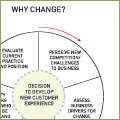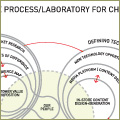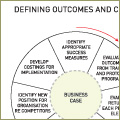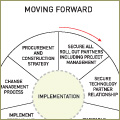METHODOur ApproachOur design approach is focused on identifying the value of achieving change where this is critical to our clients for improving their customer experience as part of their commercial performance and to gain a sustainable competitive advantage.
|
CREATING A UNIQUE CUSTOMER EXPERIENCE
|
|
|
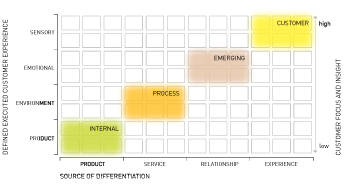
[Click on diagram to enlarge ]
|
|
|
We have developed a toolkit of techniques to explore potentials and deliver design outcomes that brings together all of the key business disciplines into a coherent and integrated space. Working with Dennis Quinn and Associates we have combined this toolkit with a proven four-phased client engagement process beginning with an evaluation of internal client pathways and commitment to change. Our techniques focus on the careful framing of questions generated by the design process and extensive communication of the design outcomes to assist our clients to evaluate and visualise these. The process engages with establishing verifiable reasons for change or design input, developing a researched foundation to the design strategy, building a customer experience at the centre of this strategy, prototyping and testing it and following it through to create an optimal roll out strategy.
|
TRADITIONAL ARCHITECTURAL DESIGN METHOD
|
|
|
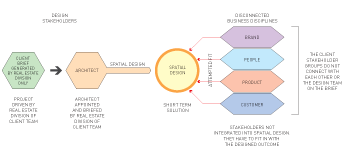
[Click on diagram to enlarge ]
|
In the traditional model there is a disconnect between the client brief and the real needs of all of the client stakeholder groups. Often the key stakeholder groups do not share information to allow such a full client brief to exist. It then falls to real estate to solve the problem of fulfilling the need for new space. The physical customer experience is not an integrated one. It is not owned by the client stakeholder groups.
|
|
|
CROWD DESIGN PROCESS
|
|
|
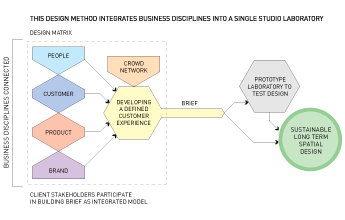
[Click on diagram to enlarge ]
|
In the Crowd model inputs are combined in a cross-disciplinary discussion to create an integrated brief that is tested in a spatial prototype laboratory prior to committing to implementation and roll out. The prototype laboratory also functions as a training facility to introduce new technologies and processes to management and staff.
|
|
|
These techniques include scenario mapping, spatial workshops, computer visualisations and ongoing reporting of the design process. The four-phased approach focuses on creating an optimal architectural experience for customers and users based on understanding the need to develop a new experience, testing this experience against our clients commercial strategy, developing and testing a business case and orchestrating construction or rollout using proven success measures.
|
The market place in which designers offer improvements and innovation for their clients is now more dynamic than ever, not fixed and not predictable. Innovation, which used to be the province of a few companies, is now understood as a valuable competitive tool for marketing, cost saving and brand image management for many companies. Companies employing innovation are now seeking to respond more quickly and increase market share and create a competitive advantage. In the market place there is now the perception that innovation is a valuable story that can indicate a manufacturer's concern with customers and a commitment to the future and that the company intends to be around, further suggesting responsibility for both it's actions and to it's relationships.

|
|
|
In addressing commercial architectural briefs these factors are now critical in developing strong and sustainable spatial experiences for customers and users. Companies now recognise that their building infrastructure can provide a powerful additional dimension to their commercial competitiveness and commercial success.
|
Innovation, vision and scenario mapping to develop designs for such spaces require a different set of skills to the set required to run a successful organisation. Design innovation requires a dynamic engagement with our clients. Traditional design models see design as a static process. Our own research tell us that today this is no longer a useful approach. We have therefore developed a more dynamic and fluid set of techniques for engaging with our clients to develop more unique and informed solutions.

|
|
|
We pursue the design process through a robust and proven methodology rather than only exercising a fluency within the traditional design boundaries. We assess existing services, commercial and manufacturing models and look to reconfigure and develop these models, constructing new network or system models. With our clients we complete a survey of practices, historical and contemporary, to consider and define modes of operation, concepts and outcomes. From this analysis gaps and strengths in the possible approaches to this kind of practice are identified. This examination of both tested and unexplored territories within the service or industry sector is used to develop new design ideas that deliver the defined customer experience.
|







